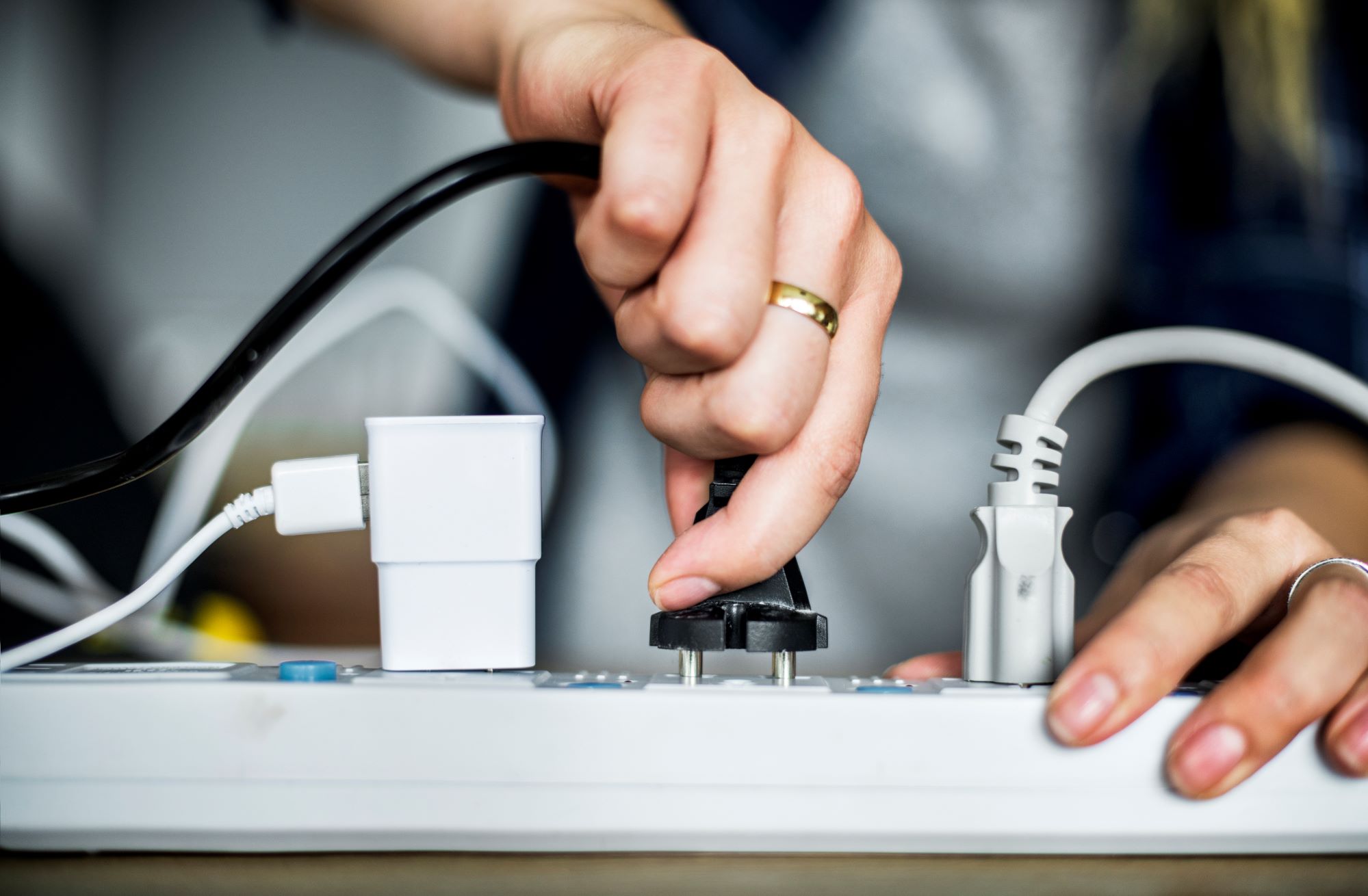Follow these best practices for using power bars in your home or work office. I’m sharing them after experiencing a near-miss incident of my own.

Photo credit: istock.com/Rawpixel
I was working from home, talking on the phone in the living room, when I noticed the unmistakable smell of smouldering plastic. “Sorry, but I’ll have to call you back. I smell something burning!” I said to the caller.
The burning smell was coming from the next room, which I use as an office. I didn’t see smoke, nor any obvious source of the smell. I started to worry that maybe something was wrong with the electrical wiring inside the wall.
My son smelled it too, and we decided to call the fire department’s non-emergency line. About 10 minutes later, two firefighters arrived in full gear (without sirens or flashing lights). They didn’t smell anything out of the ordinary, but for caution, they shut off the circuit breaker that powers the room in question. They advised me to contact the maintenance coordinator for our strata.
I left a message for our on-call maintenance coordinator and shut the door to my room. After a few minutes, I opened the door again and took a sniff. No plastic burning smell. So, I turned the fuse back on — and within a few moments, the smell was back!
Using power bars safely
The maintenance coordinator texted me this question after consulting with an electrician: “Do you have any electrical power bars or phone chargers plugged in?”
I did have a power bar plugged in. And my phone charger was one of several things plugged into it. I unplugged the power bar from the wall socket immediately and — lo and behold — the smell went away.
This is why I’m reminding everyone to check their electric power bars and chargers. They should be surge-protected and suited to handle the type of equipment you’ll be plugging into it, such as computer equipment and electronic devices that need charging.
Useful resources
Read about an incident similar to mine in Failure of power bar causes burning and heat damage from Technical Safety BC., in which a power bar began to smoke and burn. It wasn’t overloaded at the time but had been damaged by being overloaded before then.
Also see Electrical Safety – Basic Information from the Canadian Centre for Occupational Health and Safety, which reminds us to: “Inspect portable cord-and-plug connected equipment, extension cords, power bars, and electrical fittings for damage or wear before each use. Repair or replace damaged equipment immediately.”
Electrical product safety from Health Canada says: “Make sure you follow the charging instructions and do not place a charging product near combustible materials or on soft surfaces, such as a couch or bed. Soft surfaces can trap heat around the battery and result in overheating or a fire.”
Health Canada also reminds us to always check for certification marks before buying anything that plugs into an electrical outlet: “These marks indicate that the products are assessed and conform to the required Canadian national safety standard.”
At first I felt foolish for involving the fire department, the maintenance coordinator, and the electrician in a problem that was actually caused by the old, overloaded power bar I was using. But I’m just grateful they all responded so quickly when I asked for help.
After my own experience, I will remain aware that excessive loading of a power bar can lead to smoke and fire.



Never over load the power bar. It will melt the bar and burn it later. So, be careful to read the bar capacity before plug in any electrical equipment.
This is a common problem found in house. Be careful.
Exactly!